Musée de la Musique, Paris
Musée Régional d'Auvergne, Riom
Musée des Musiques Populaires, Montluçon
Palais Lascaris, Nice
Fundación Joaquín Díaz
Etc.
Trained at the Institut National du Patrimoine in Paris, my interventions respect the professional rules of the E.C.C.O. (European Confederation of Conservator-Restorers' Organisations):
Reversibility, visibility, conservation of matter, preservation of ancient techniques and acoustic information.
In the deontological sense of the term, restoration respects to the maximum the preservation of heritage information, the authenticity of the work, its history (traces of use, when they do not alter other values) and its patina, but also the original materials and its technological information. Always respecting the legibility and reversibility of our interventions. There are several levels of intervention:
Curative: when it is simply a question of eliminating alterations that are harmful to the good conservation of the work, such as dirt that favors the development of contaminating agents and the change in pH of the surface of the work, instability of the structure, fragility, etc...
Aesthetics: once the work has been stabilized, the aim is to restore its legibility, such as its decorations, its polychromy, etc...
Functional: when we consider that it does not endanger the work, we then set reasonable limits to its use according to mechanical criteria such as: resistance of the materials, assemblies, etc... Accompanying them with a list of precise recommendations (occasional use for a musical instrument, use of gloves, limitation of light exposure, etc.).
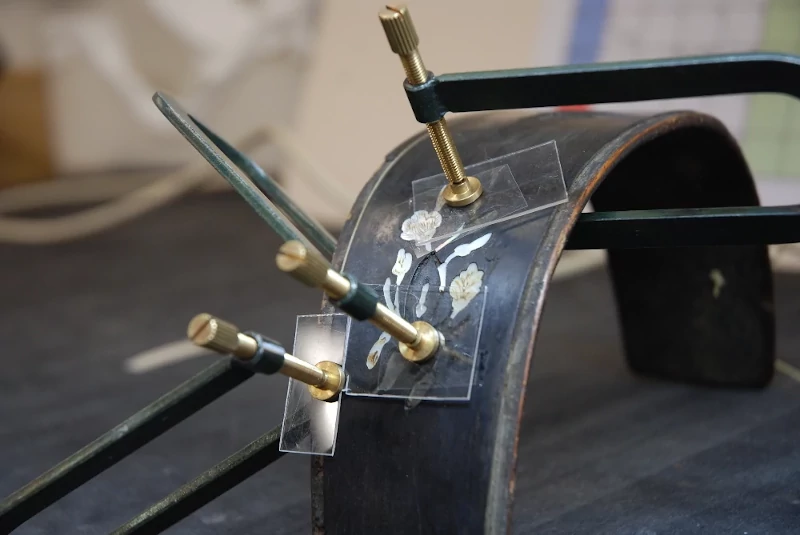
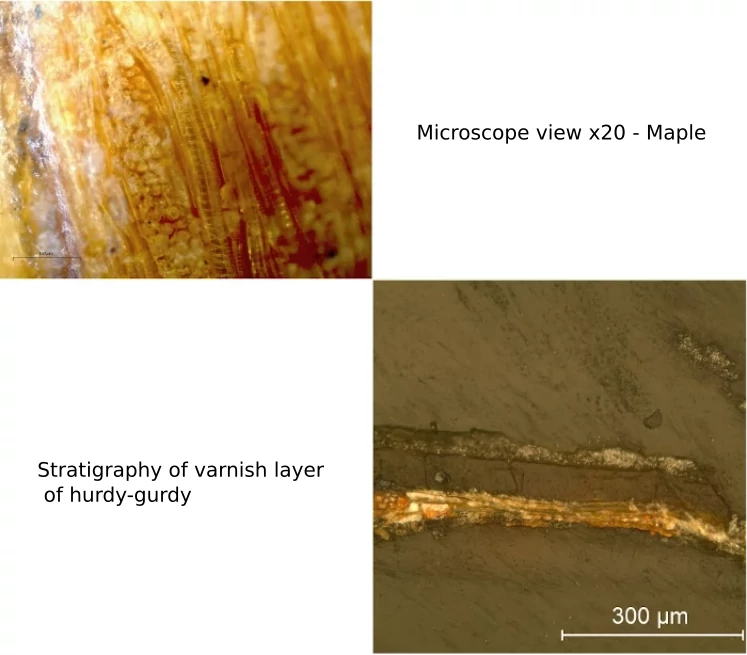
Typification of wood species using a xylographic approach. Identification of materials, varnishes, polychrome layers and adhesives using laboratory processes and analyses. Measurement of the thicknesses of the veneer, traces of the tools and as many clues that allow us to provide information on the technological aspect of the work. Investigation of the different stages of manufacture of the work through the study of its structure and its assemblies, collected thanks to the historical information and the experience accumulated by the craftsman of art.
Vibration spectrum sampling of the harmonic caps and analysis of their mechanical vibration modes. For old instruments, this study allows us to carry out a vibrational observation of the instrument and a periodic follow-up to detect a loss of acoustic information. The analysis of the vibration modes also allows us to identify the vibratory singularity of the soundboard and to control our restoration interventions.
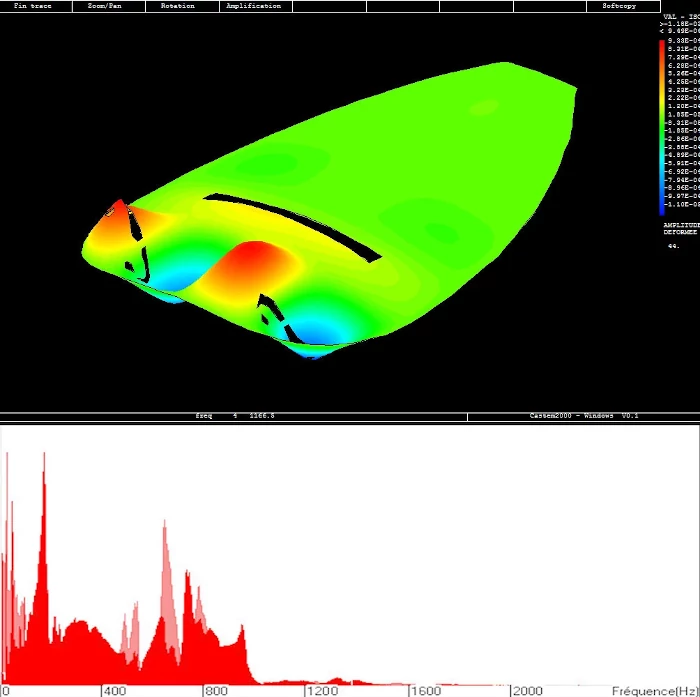
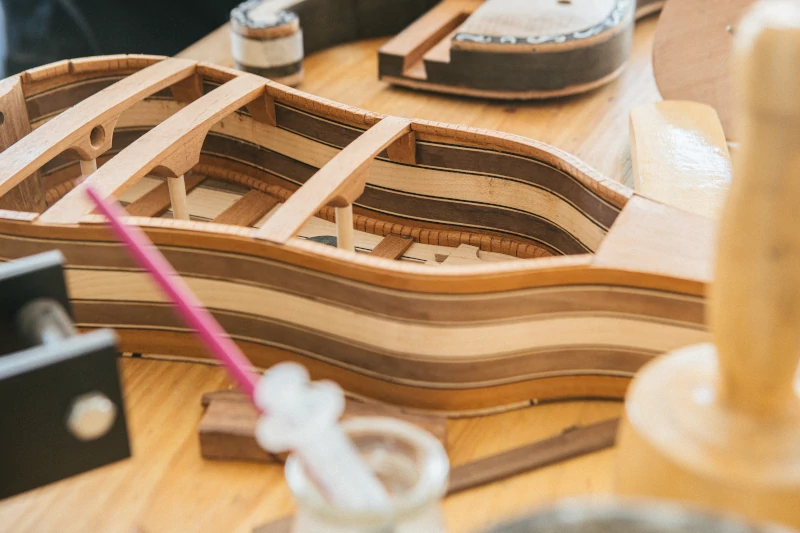
We can consider initiating a facsimile process when the functional interest of a work is at stake during the restoration process and in order to provide accurate information about its past use, or when it is a unique piece whose function is unknown and if the work does not allow to restore its functionality. It is a procedure that enriches the technical-scientific documentation of the work. We have the skills and know-how to carry out the realization of a facsimile in our workshops thanks to the collaboration of craftsmen.
In order to establish the best strategy for the preservation of works of art, we take care to control the risk factors in order to create an environment as suitable as possible for their conservation. We study the current state of the space in which they are located thanks to climatic measurements (temperature, relative humidity...) and exposure to harmful light rays, and we also inspect for the presence of biological agents. Once the different levels of alert have been identified, we establish a strategy to improve these risk factors by proposing a new organization, the use of appropriate conservation materials, an effective control system and the installation of equipment capable of limiting the degradation factors of the collections. We also deal with the organization of the mobility and accessibility of the collections and the prevention of storage risks (fire, flooding, security, etc.).
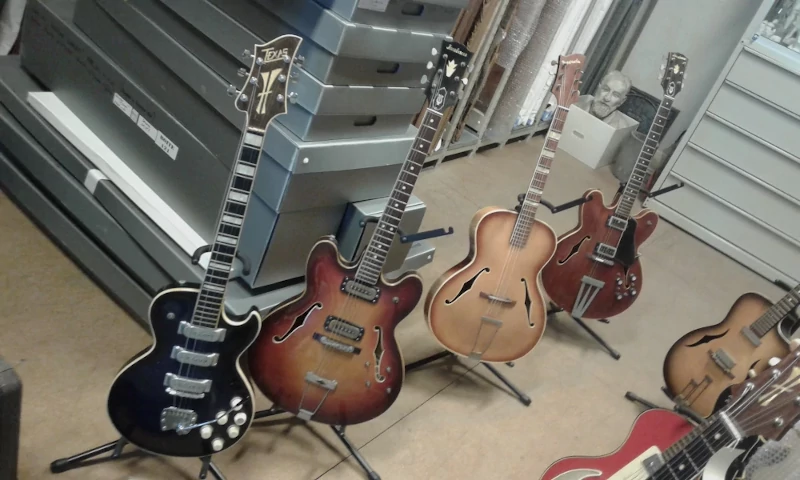
The obvious signs of the presence of a biological attack of xylophagous insects reveal an advanced stage of infestation. The eggs of these insects can remain dormant for long periods before choosing the right moment to develop within the wood fibers. It is at this time that the larvae begin to feed on wood. At the end of its cycle, when it transforms into an insect, it digs an exit hole to leave its development environment. The attack is very difficult to diagnose simply by the presence of these exit holes. Today there is no way to ascertain with certainty the presence of eggs or larvae in the construction site. In case of doubt, curative treatment can prevent future biological attacks of this type. Anoxia is a non-intrusive intervention without the use of chemicals, since it involves depriving the air of the oxygen necessary for the metabolism of the larvae for an adequate period of time.